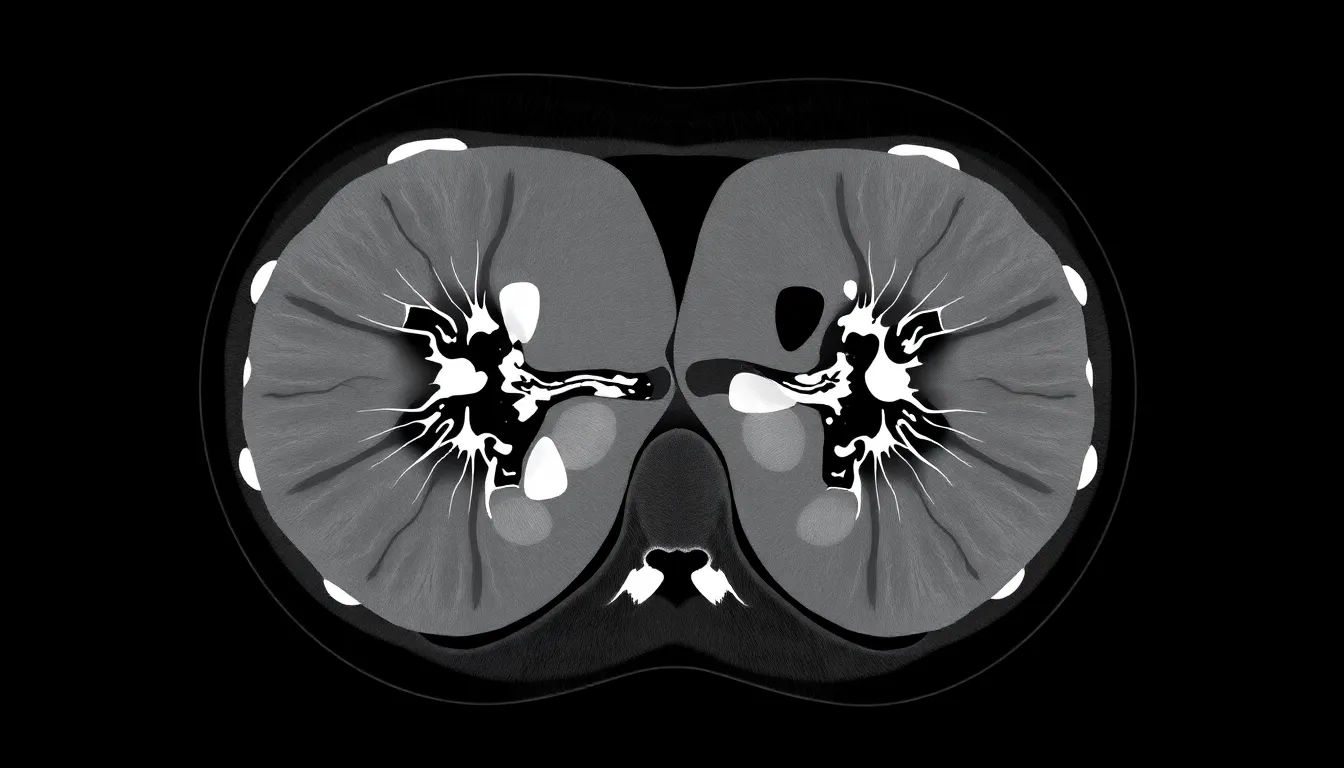Ever wondered what goes on inside that big, doughnut-shaped machine at the hospital? A CT scan might sound like something straight out of a sci-fi movie, but it’s actually a crucial tool for doctors to peek inside our bodies without needing a magic wand. It’s like giving a superhero a pair of x-ray glasses—only way less cool and a lot more practical.
Table of Contents
ToggleUnderstanding CT Scans
CT scans play a crucial role in diagnosing and monitoring various medical conditions. This imaging technique provides detailed pictures of structures inside the body, enhancing the doctor’s ability to assess health accurately.
What Is a CT Scan?
A CT scan, or computed tomography scan, combines multiple X-ray images to create cross-sectional views of the body. These images offer more detail than standard X-rays, revealing organs, bones, and tissues. Medical professionals utilize CT scans to detect tumors, internal bleeding, or bone fractures. Significant clarity aids in diagnosis and treatment planning.
How CT Scans Work
CT scans use a rotating X-ray tube and detectors to capture images from different angles. As the patient lies on a table that moves through the machine, the device generates a series of images. A computer processes these images to construct detailed 3D representations. Understanding how a CT scan operates allows patients to engage better with their medical care. Advanced technology continually improves image quality and reduces radiation exposure.
Visual Representation of CT Scans

CT scans provide remarkable visual details of the body’s internal structures. Images from these scans illustrate organs, tissues, and bones in various cross-sectional formats, aiding in precise medical assessments.
Images and Formats
CT scan images typically appear in slices. Each slice captures a thin section of the body, revealing intricate details. Additionally, doctors can view these images in 2D or 3D formats. 3D reconstructions offer a comprehensive overview, allowing easier visualization of anatomy. These images usually exhibit grayscale variations, where denser tissues like bones appear lighter, while softer tissues show darker shades. This contrast helps medical professionals distinguish between different anatomical features effectively.
Common Findings in CT Images
CT scans often reveal significant findings. Tumors frequently present as abnormal masses within tissues. Internal bleeding may show up as areas of fluid accumulation. Fractures in bones are also common observations, with breaks clearly identifiable in high-resolution images. Lung abnormalities can indicate infections or underlying diseases, evident in the lung fields of CT scans. In the abdomen, conditions like appendicitis often manifest with distinctive signs, such as inflammation surrounding the appendix. These findings enable healthcare providers to diagnose and formulate treatment plans promptly.
Interpretation of CT Scan Results
Interpreting CT scan results requires expertise in radiology. Radiologists assess images to identify abnormalities and provide diagnostic insights. They analyze details, such as the size, shape, and texture of structures within the images. Effective communication between radiologists and healthcare providers is crucial for optimal patient care.
Role of Radiologists
Radiologists play a central role in analyzing CT images. Their training allows them to identify critical findings, ranging from tumors to internal bleeding. Patients rely on radiologists’ expertise for accurate diagnoses. Radiologists use advanced software tools to enhance image clarity, improving assessment accuracy. Collaboration with medical teams ensures comprehensive care.
Factors Influencing Interpretation
Several factors influence the interpretation of CT scans. Patient history contributes significant context for radiologists. Age, medical conditions, and prior imaging impact diagnosis accuracy. The quality of the images also plays a vital role. Technical aspects, including radiation dose and image resolution, affect interpretative outcomes. Radiologists consider these variables to provide precise insights into patient health.
Comparisons with Other Imaging Techniques
CT scans provide unique advantages that set them apart from other imaging methods like X-rays and MRIs. Understanding these differences helps in choosing the best diagnostic tool for specific conditions.
CT Scans vs. X-rays
CT scans produce detailed cross-sectional images, whereas X-rays offer flat images of structures. With a CT scan, medical professionals can view organs in various slices, enhancing clarity. In contrast, an X-ray captures a single moment in time, which may miss subtle abnormalities. Exposure to radiation also varies; CT scans typically involve higher doses compared to standard X-rays. Physicians often recommend CT scans for complex cases, such as detecting tumors or internal bleeding.
CT Scans vs. MRIs
CT scans excel in imaging bones and detecting acute injuries, while MRIs specialize in visualizing soft tissues like the brain and muscles. A CT scan is faster, usually taking a few minutes, making it ideal for emergency situations. Conversely, an MRI process takes longer, often exceeding 30 minutes, as it requires multiple images for detailed analysis. Both have unique advantages depending on the diagnostic context; CT scans effectively evaluate trauma, while MRIs assess conditions like brain tumors or joint disorders.
CT scans are an essential component of modern diagnostics. They provide unparalleled insights into the human body, enabling healthcare professionals to make informed decisions about patient care. The detailed images produced by CT technology highlight the intricacies of internal structures, which aids in the detection of various medical conditions.
As technology advances, the quality of images continues to improve while minimizing radiation exposure. This evolution enhances the role of radiologists in interpreting results and collaborating with healthcare teams. Understanding what a CT scan looks like empowers patients to engage in their medical journeys with confidence. The clarity and precision offered by CT scans truly make them a cornerstone in medical imaging.








